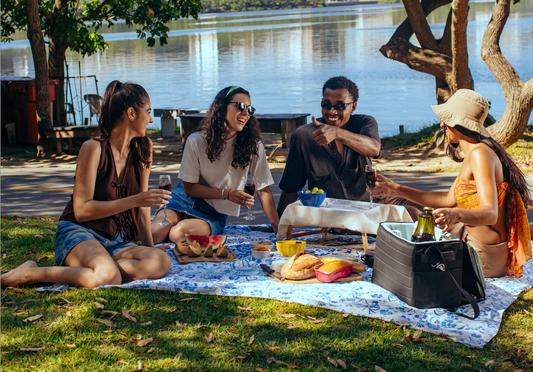Going to the Fish Market in the South of Spain
by Dana M.
Growing up in Madrid, I learned that the freshest fish in the country was always in Madrid. Madrid is in the geographical center of the country, far away from any coast, but ironically its position gives it a special advantage as a focal point for consumption and distribution of all kinds of fish and seafood to the rest of the country. Most of the time, the freshest catch is indeed in Madrid.
An exception to this rule are the southwestern regions of Spain, specifically Seville and Cadiz. Cadiz has a millennial tradition of tuna fishing, as well as farming many types of other fish and seafood. Because of this, the area of Cadiz has an honorary position as the actual “freshest“ capital of Spain when it comes to certain varieties of fish. Cadiz itself, once an important port with a monopoly of maritime transit between the Americas and Europe, eventually fell in importance due to its isolated geography, locked in an island, and to the more industrious coastal cities around it. In the proximity of both the city of Cadiz and other regional harbor towns, lies Zahara de los Atunes. This small fishing town has specialized in bluefin tuna fishing for over 30 centuries, maybe more. Today, it has evolved into a tourist destination that still mixes its traditional fisheries while curating to demanding visitors who want to spend their summer next to a quiet beach.
In the neighboring town of Barbate, not too far from a trove of Greek, Roman and Moorish ruins, there is a vibrant traditional market where fish is so fresh that you would find it swimming in the open ocean a mere couple of hours before it’s in your cart. Every summer as a child I would treasure the biweekly family tradition of going to the market with my grandmother. We would walk into the cool, crowded hall, with massive walls covered by a mural of the open ocean, and stop at every stand to compare the products and pick the freshest ones to bring home. The first stop would always be the fruit and vegetable stand, where Manolo, the fruit seller, would offer me a taste of the cherries, the nectarines, or whichever was the most appealing fruit in his stand. Next, we would get the fish, my favorite stop, where the catch would be displayed in all its beauty, covered in ice, with googly eyes staring at us. Then would come the bread and the sweets from the Martinez siblings, “the best bakers in the country”, according to my family.

Since then, I have always cherished the tradition of going to the fresh food market in Spain. This week, fifteen years since the last time I visited, I went to this same fish market in Barbate, and it was like traveling back in time, as I entered the ocean-themed hall and navigated the bright colored stands where sellers would proudly display their fruits, vegetables, meats and fish. The artful sense of abundance showcased in each stand mixes up with the loud and clever art of haggling. If you arrive early enough in the morning before anybody else gets there, you can see the fish being brought straight from the water, still alive. Then you see the fish sellers organize the samples of tuna, dogfish, scallops and shrimp, with the most appealing samples up front.
There is something special about this way of shopping, compared to going to a regular grocery store, that to this day makes it feel like an adventure. It also brings me closer to the early stages of the supply chain where I can appreciate the hard work that goes into getting the food I eat from where it’s farmed, to my table.



